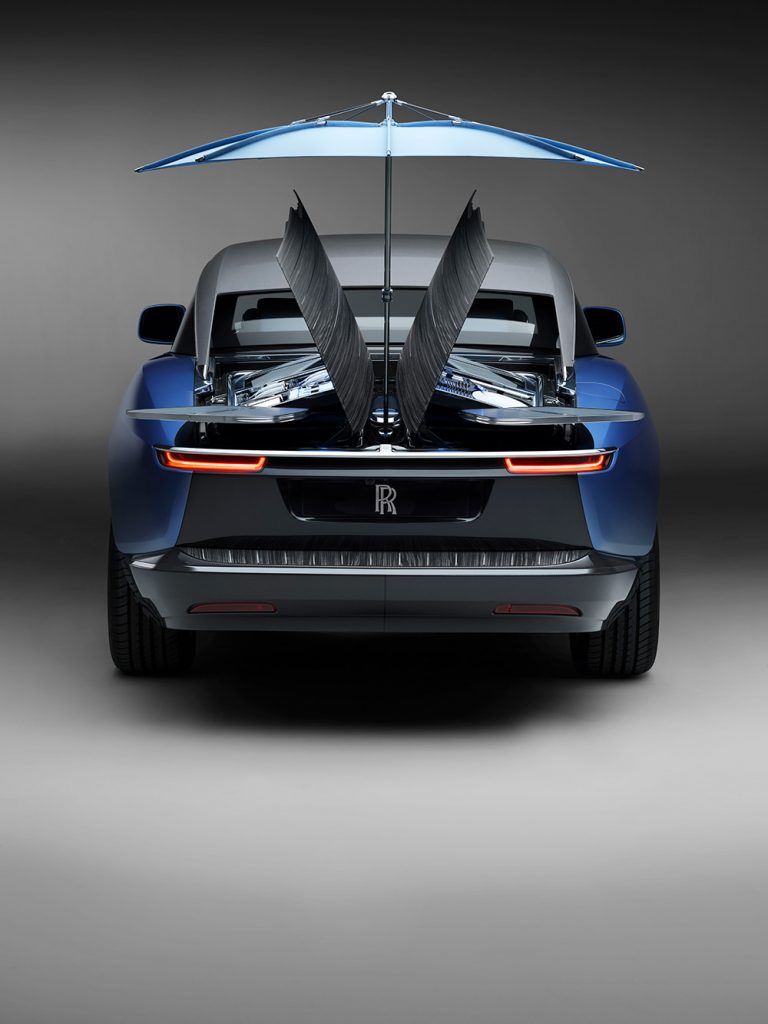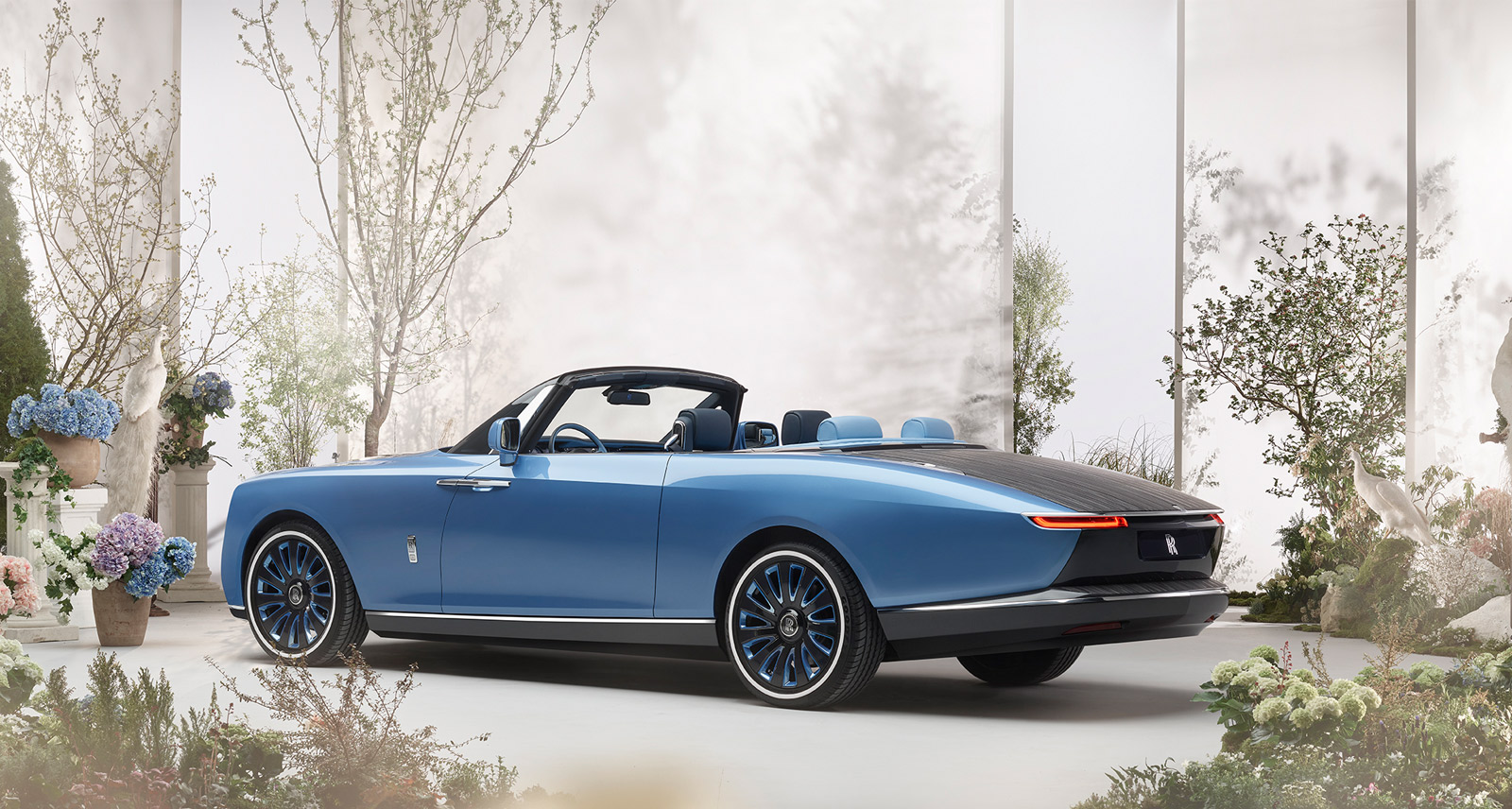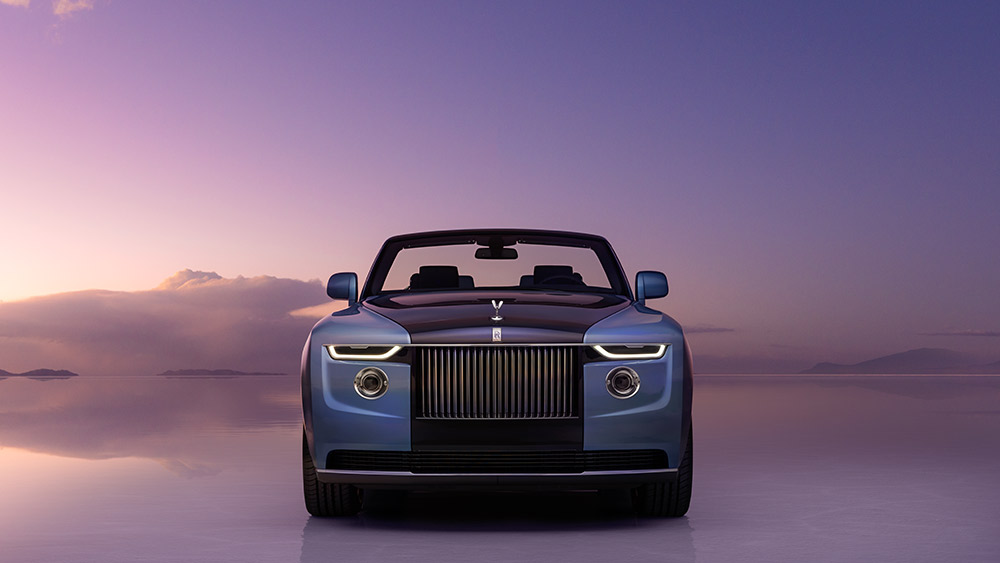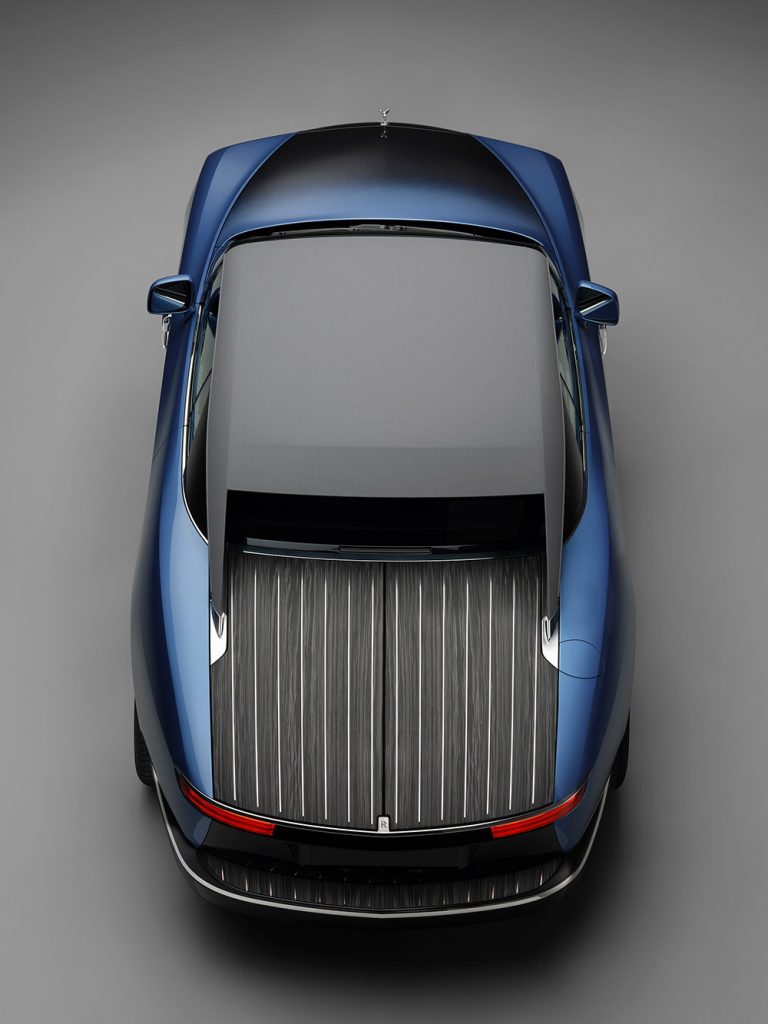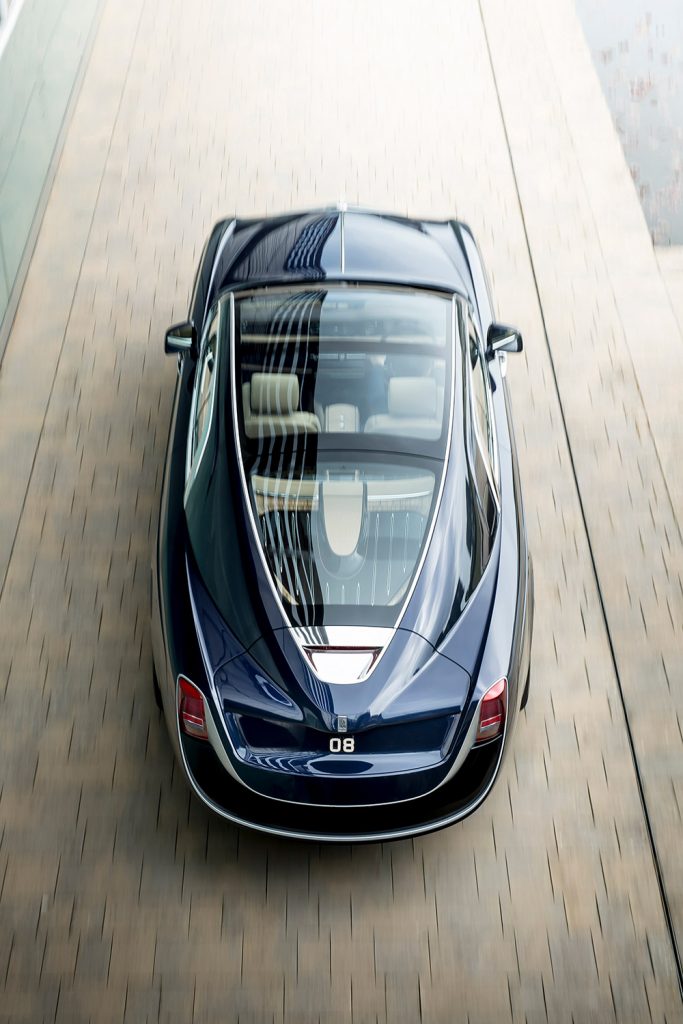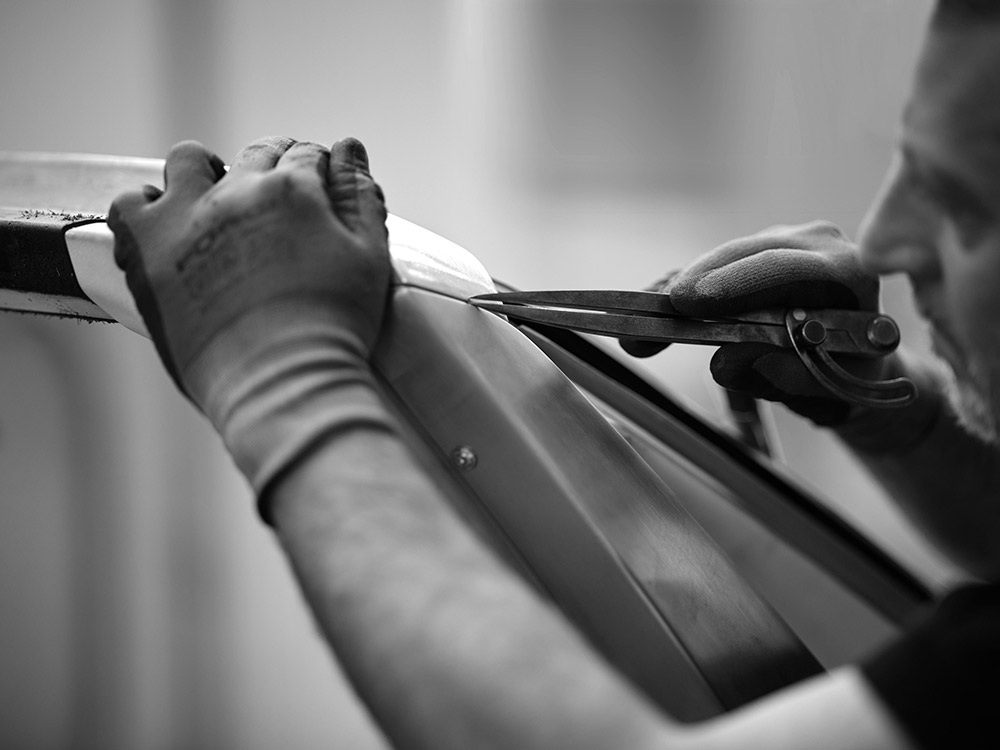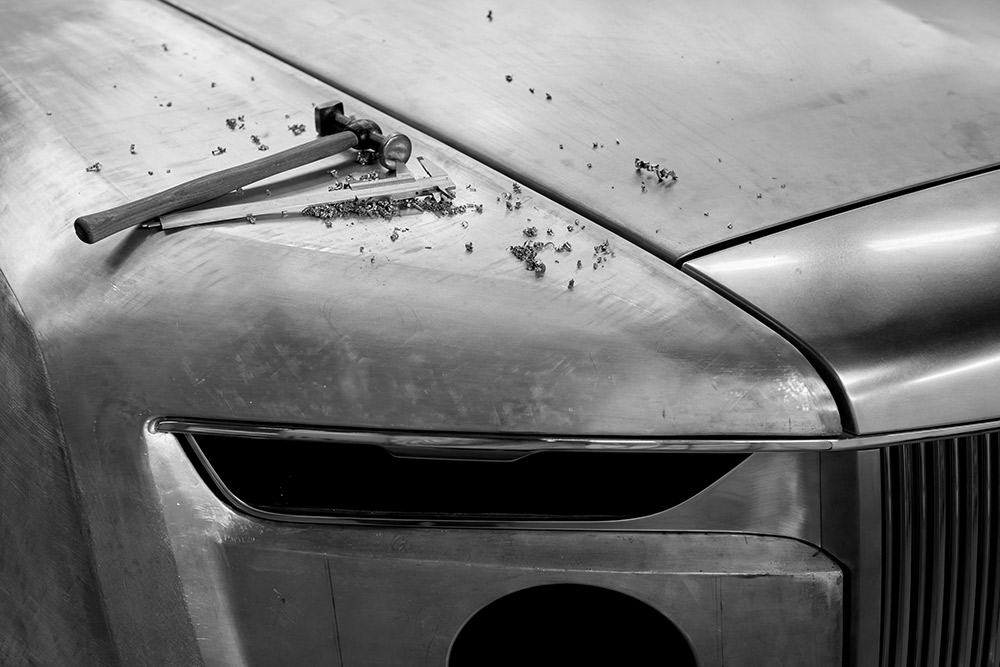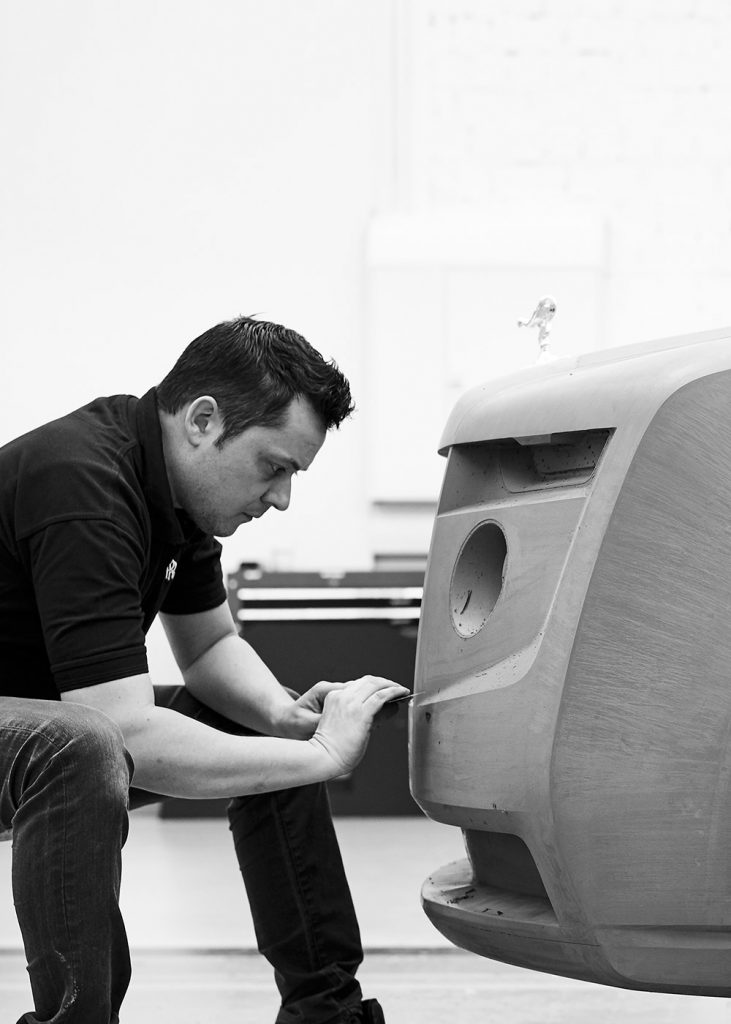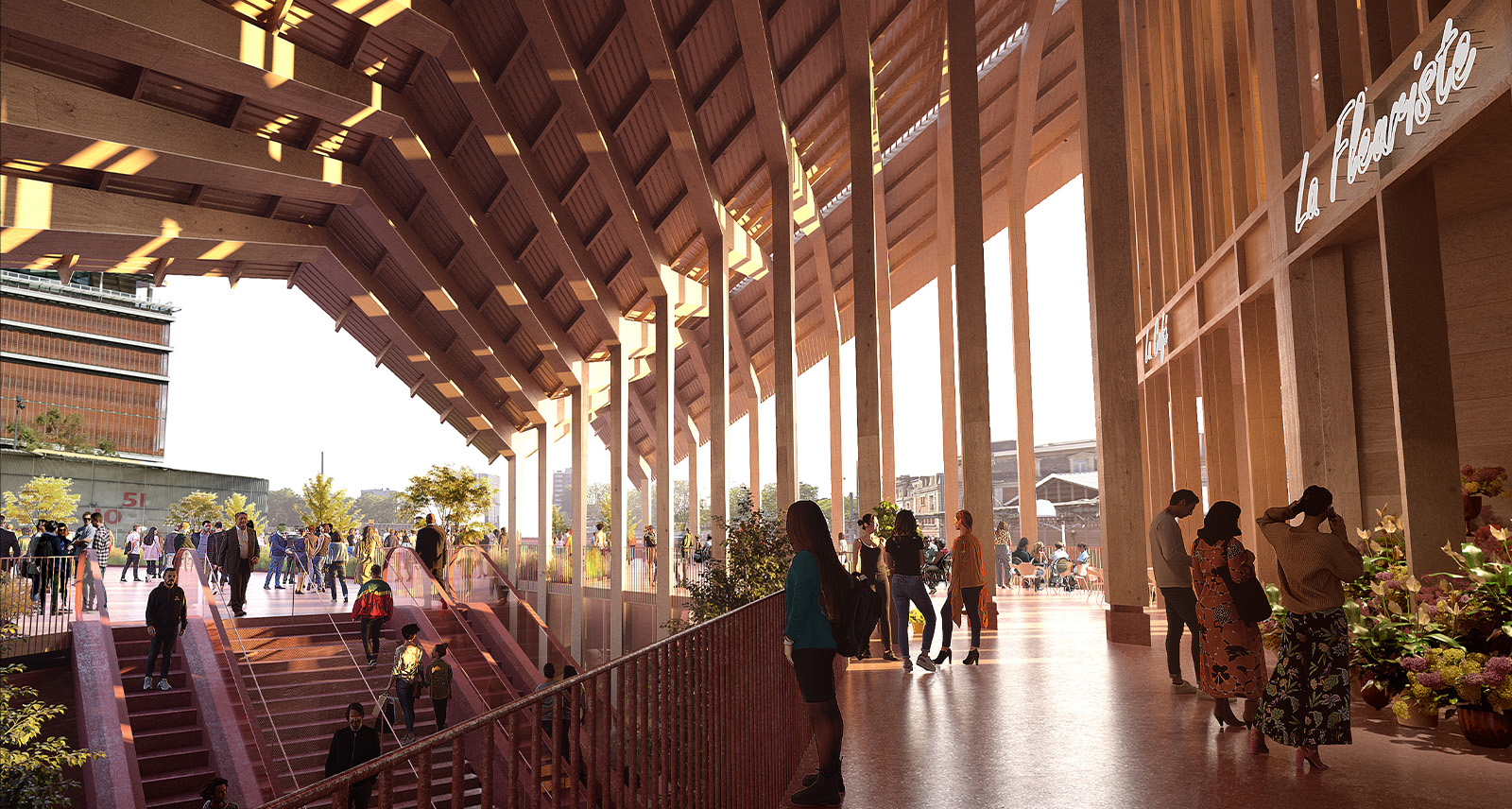Rolls-Royce Is Returning to Custom Car Building with This Picnic-Perfect Ride
The Rolls-Royce Boat Tail is an almighty flex by the maker of the world’s most extravagant automobiles. This spectacular machine also marks a return to the brand’s coachbuilding roots. Four years in development, it is the first product of Rolls-Royce‘s resurrected Coachbuild division, which, much like how it did in the company’s early days, will offer a handful of well-heeled customers the opportunity to design a completely original one-off car from the wheels up.
Rolls-Royce is making three Boat Tails — all by hand — for the three clients who commissioned the project. Naturally, Rolls-Royce won’t divulge how much each car costs (we do know that the price tag is considerably more than $15 million USD) or who the clients are. “We really handpick the clients; it’s a kind of procedure — and I don’t want to sound arrogant — but I’m involving myself personally,” says Torsten Müller-Ötvös, chief executive of Rolls-Royce Motor Cars, from the brand’s headquarters in Goodwood, England.
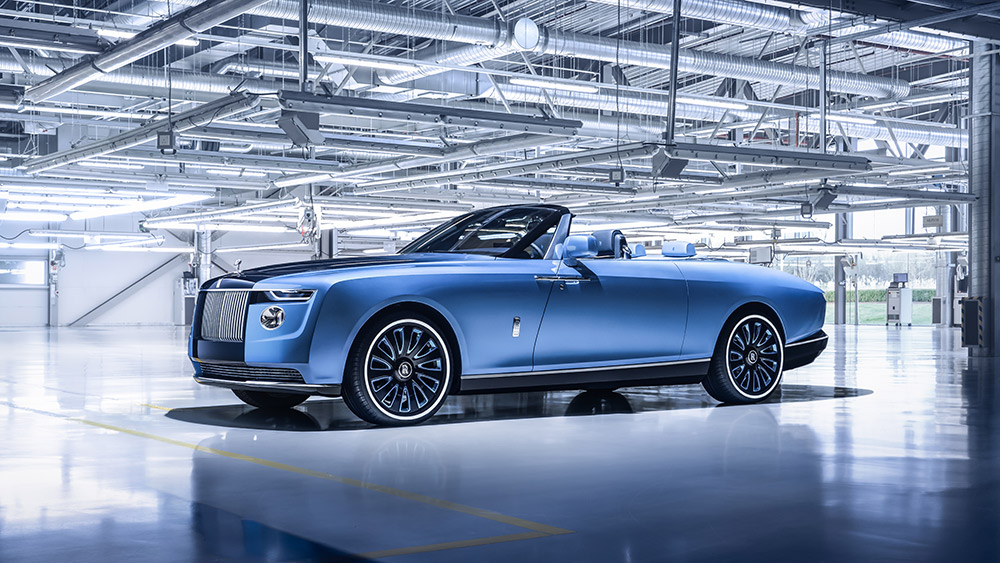
The plan is for Rolls-Royce to take on a new coachbuilt commission every two years. “We want to keep it rare and highly exclusive….It’s the top, top, top of the pyramid of our business,” Müller-Ötvös explains. He is confident the demand for coachbuilt cars will exceed the supply, so the company can afford to be selective with its clients. “You want to know [who] you are in that boat for a four year journey [with], and you will also want to get a clear commitment from them that they are prepared to engage themselves. They need to travel over here to Goodwood. They need to see clay models. They need to sign off officially on design steps,” he says. “They also need to have — I would call it, a certain understanding — of some technical constraints. Yes, we are Rolls-Royce and our promise is, more or less, everything is possible, but it might happen that certain ideas are not legally compliant.”
A coachbuilt car is often compared to a bespoke suit, but it’s not really like that at all. Cars are infinitely more complex; these machines don’t just have to look good and fit their clients, they also have to comply with devilishly complex safety and emissions regulations, which vary wildly across the globe. That the Boat Tail isn’t some museum piece or track-day toy — it’s fully road-legal — makes it all the more impressive.
Of course, in the 1920s and 1930s (the golden age of coachbuilding), there were hardly any safety regulations at all. Rolls-Royce would supply an engine and running chassis, and buyers would then commission a coachbuilder to create a one-off body — hammered out of aluminum — with a matching interior. By the 1960s, Rolls-Royce was making most of its cars, except for the Phantom VI, as a single semi-monocoque structure. The chassis was no longer built separately from the body and interior, and coachbuilding largely died out. Today, it’s almost a lost art.
But two things happened to make the re-launch of Rolls-Royce’s coachbuilding program possible. In 2017, the marque unveiled a one-off coachbuilt coupe called the Sweptail. “I would call it an experiment,” says Müller-Ötvös. “We learned from client feedback that many would love to do a kind of similar project.” The phone started ringing with customers wanting to build their own custom projects. The second event was the development of an all-new aluminum spaceframe chassis that underpins the current Phantom, Cullinan, and Ghost. It’s extremely adaptable, less like a modern monocoque and more like a traditional rolling chassis. It gives designers and engineers a base to once again make coachbuilt cars, like the Boat Tail.
Each Boat Tail features 1,813 completely new, custom parts. The spaceframe chassis was reconfigured to support the nearly 5.8-metre long car — that step alone took eight months. All three clients are fond of J Class yachts, so the car’s lower cabin, floor area, and rear deck are made of hand-finished wood. The bodywork is hand-rolled and hammered aluminum, built by people who’ve spent their lives perfecting this craft. The roof is an unusual fixed-canopy design, but there’s also an emergency tonneau cover to keep you dry should you get caught in one of those rare Mediterranean thunderstorms.
But the most luxurious detail of all is that at the push of a button, the car’s rear deck splits open to reveal everything you’d need for an impromptu picnic. On one side: aperitifs. On the other: cuisine with engraved cutlery from Christofle in Paris. Even a double refrigerator was developed to chill the clients’ favourite vintages of Armand de Brignac champagne, says Rolls-Royce. To top it all off, the car’s rear also houses a pair of cocktail tables and stools, the latter created by Italian furniture maker Promemoria.
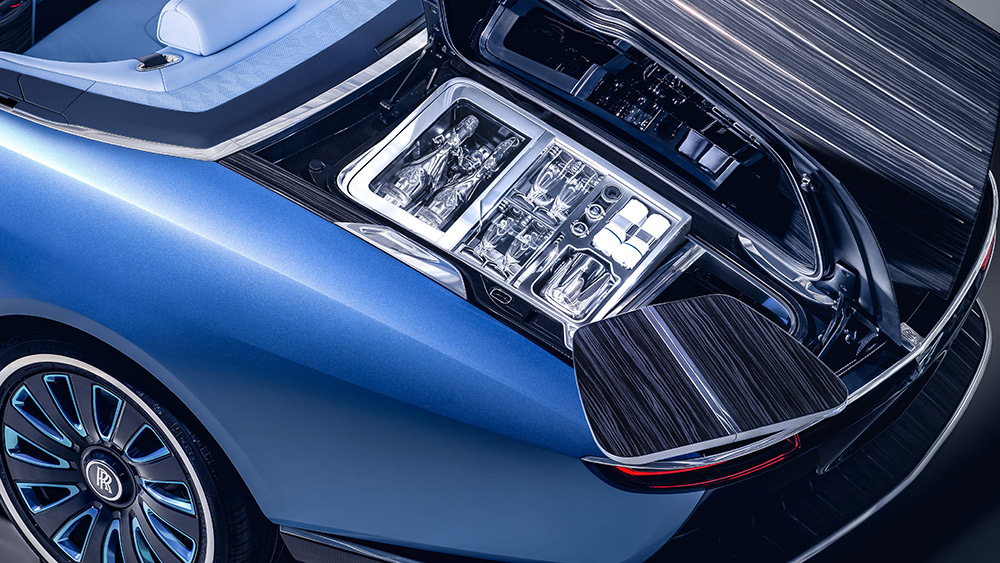
The three clients who commissioned the Boat Tail are “real cosmopolitans,” says Müller-Ötvös. “All three of them are people [who enjoy] life and that’s also the reason why that theme about al-fresco dining — picnicking — was chosen. That really unites them. Obviously, they all have money, but that’s it. More, I can’t tell you.”
